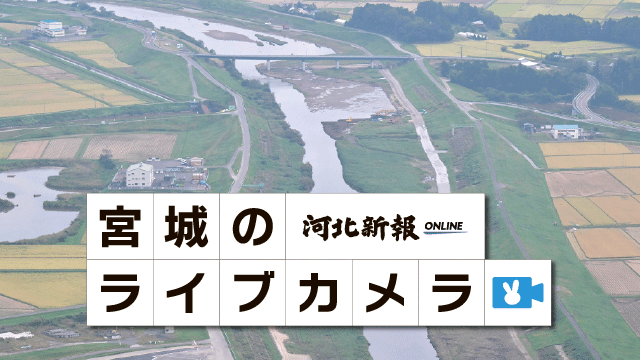Part 5: Pitfalls in Preparation (2) How building the Great Wall invited negligence



Dubbed Japan’s “Great Wall of China,” the majestic seawall symbolized the tsunami protection of Taro District, Miyako City, Iwate Prefecture. This 10-meter-high and 2433-meter-wide X-shaped barrier protected the Pacific shoreline. After the Great East Japan Earthquake, ironically, the belief spread that having a strong wall invited negligence.
“Seawall of the sea side must protect us” Chikara Totsuka (67) was optimistic.
“The incoming wave will be 3 to 4 meters tall.” A radio announcement reported the high possibility of a tsunami’s approach. Totsuka lived in Taro but his house was far from the water. Two sections of the seawall, land and sea, soared above and shielded the town.
Thirty minutes after the main shock of the earthquake, Totsuka began heading towards higher ground at a shrine 200 meters from his home. However, a black haze near the land wall, about 600 meters away, caught his attention.
“Is it a fire?” he thought at first, but in reality it was the tsunami surmounting the seawall. Wondering if his wife (then 62) was still at home, Totsuka was torn between returning and evacuating, but in the end ran to the shrine.
The tsunami traveled quickly: by the time he set foot on the shrine steps, debris from houses flowed past him. His wife perished that day.
Often hit by tsunamis, the area was fittingly bestowed the nickname “Tsunami Taro.” Both the 1896 and 1933 Sanriku Earthquakes brought catastrophic damage to this region.
After the 1933 disaster, Taro began constructing the seawall and forging its path to restoration. In 1957 fiscal year, the landside wall was completed, and later in fiscal 1978, its seawall counterpart was expanded along the water.
Totsuka’s mother who died approximately 20 years ago, lost her mother to Showa Sanriku Tsunami of 1933 and was herself caught in the disaster. She had often warned him, “If there’s an earthquake, a tsunami will follow. Get away quickly.” Not doubting his safety that day, Totsuka failed to heed his mother’s words.
Local schools dedicated songs to the seawall; foreign tourists came to see it. The seawall was the pride of the people.
“There will never come a day when something can go over Japan’s, and the world’s, largest wall.” Keiko Musashi (71) had placed her faith on it.
After the main tremor, she peered outside and noticed her neighbors hurrying to evacuate. She called out to them, “Why are you leaving? I’m staying put.” Musashi returned inside and went about her business, trying to find her medication.
All of a sudden, she realized that the tsunami had reached her entryway as water rushed in. She moved to a higher part of the house and waited for help. By chance, there were others nearby and they rescued her through a window.
A 61-year-old fisherman, Gen’ichiro Yamamoto, was heading home in his truck along Highway 45, parallel to the seawall. Although the radio forecast the arrival of a tsunami, they did not broadcast traffic instructions. Cars continued to drive along with no sense of impending danger.
Boom. With a sudden loud crash, dark water exploded over the seawall and surged onto the highway. By blast that blows just before the arrival of the tsunami, Yamamoto’s car was crashed into the confectionary along the highway. He got away from his car buried in water at last.
“I didn’t understand how far the wave would come from the seawall,” Yamamoto recalled. Cars both in front and behind were disappearing.
According to a study by Tohoku University following the disaster, the average height of the tsunami in Taro reached 16 meters. Former Taro Town which includes this district had 181 victims total. There were the most numbers in Miyako City.
◎ Lessons learned from the titanic structure
Having thoroughly embraced the titanic seawall, Taro District remained protected until the Great East Japan Earthquake. The structure alone provided complete security.
Constructed following the 1933 Showa Sanriku Earthquake, the 1350-meter-long, 10-meter-tall landside seawall was completed in 1957.
To tackle a situation like the Meiji 1896 Sanriku disaster’s 15-meter tsunami, Taro Village at the time built a clear road that directly accessed higherground and strove to establish evacuation strategies by implementing practices such as daily evacuation drills.
In 1960, the Great Chilean Earthquake struck. Despite 3- to 6-meter-tall waves, areas fortified with a seawall along Japan’s Pacific coast were relatively unharmed. As a result, the barrier method became the domestic standard in tsunami disaster prevention.
With the completion of Taro’s newer 1083-meter seawall on the water in 1978, its two interposing embankments allowed the town to accelerate residential expansion in what was previously a tsunami buffer zone. Chances of everyday life being threatened by nature dwindled, and tsunami devastation became a thing of the past.
“Evacuation training has become a declining trend. It’s fading from society,” remarked Yuichi Nonaka (77), Taro’s former mayor until its incorporation into Miyako in 2005. While in office in 2003, Nonaka announced Taro’s 70th year as a tsunami-safe town since the 1933 Sanriku tsunami. The local government made the leaflet which called for disaster prevention, and distributed it to all households.
The leaflet appealed as follows. “The current seawall does not experience a tsunami. If people trust the seawall too much, they may fail to evacuate and it may be attacked by a tsunami”
On the other hand, “Even if an earthquake struck, a big [enough] tsunami didn’t come. I also didn’t believe I would experience something like it in my lifetime,” Nonaka noted, capturing the optimistic mood that permeated the region.
A study emerged about the dependency on physical barriers in the Iwate coast. Using the tsunami warnings along the Sanriku coast during the 2010 Chile earthquake and tsunami, Iwate officials and the Iwate University produced a survey that examined the execution of the evacuation and crisis protocols in targeted households.
It revealed that 25% of those polled who answered, “I do not need to evacuate,” indicated having disaster prevention structures such as seawalls and breakwaters as their primary reason.
In disaster-prone prefectures, the rise of seawalls became the trend for preventing destruction on the same scale of the aftermaths of the 1896 and 1933 Sanriku tsunamis.
Ten-meter-plus seawalls are not rare in this region. Both the Taro coast (Miyako City, Iwate Prefecture) and Motoyoshi beach (Kensen’numa City, Miyagi Prefecture) have 14.7-meter walls while Toni bay’s (Kamaishi City, Iwate Prefecture) wall is 14.5 meters tall. High category tsunamis like those resulting from earthquakes have helped in advocating multiple civilian safety protocols.
In Akahama District, Otsuchi Town, Iwate Prefecture, the seawall reaches 6.4 meters.
Though the prefecture proposed the seawall construction of 14.5 meters, the residents insisted on maintaining the status quo. Their intention was to avoid the need for taller seawalls by relocating and reconstructing homes on higher ground.
Hiromi Kawaguchi (64) states with conviction, “Man-made structures cannot win against natural forces. We cannot be so self-assured.” She is a leader of local group “Akahama no Fukkou wo Kangaeru Kai” that think about reconstruction of Akahama.
“When residents view shorter seawalls in a better light, in turn they will hone their senses of self protection,” suggested Nobuo Shuto, Tohoku University’s professor emeritus of tsunami protection engineering. “By using resident feedback to determine the height of these walls, people will begin considering their safety in a personal way.”
Translated by Margaret Ngo
April 30, 2013 (Tues.)
[Japanese] http://www.kahoku.co.jp/special/spe1114/20130430_01.html
 朝刊・夕刊
朝刊・夕刊 記事を探す
記事を探す FAQ
FAQ















